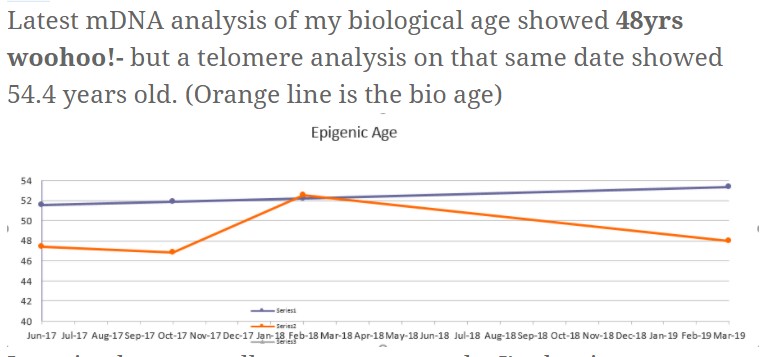
Senolytics are a class of drugs that selectively clear senescent cells (SC). The first senolytic drugs Dasatinib, Quercetin, Fisetin and Navitoclax were discovered using a hypothesis-driven approach. SC accumulate with ageing and at causal sites of multiple chronic disorders, including diseases accounting for the bulk of morbidity, mortality and health expenditures. The most deleterious SC are resistant to apoptosis and have up-regulation of anti-apoptotic pathways which defend SC against their own inflammatory senescence-associated secretory phenotype (SASP), allowing them to survive, despite killing neighbouring cells. Senolytics transiently disable these SCAPs, causing apoptosis of those SC with a tissue-destructive SASP. Because SC take weeks to reaccumulate, senolytics can be administered intermittently - a 'hit-and-run' approach. In preclinical models, senolytics delay, prevent or alleviate frailty, cancers and cardiovascular, neuropsychiatric, liver, kidney, musculoskeletal, lung, eye, haematological, metabolic and skin disorders as well as complications of organ transplantation, radiation and cancer treatment. As anticipated for agents targeting the fundamental ageing mechanisms that are 'root cause' contributors to multiple disorders, potential uses of senolytics are protean, potentially alleviating over 40 conditions in preclinical studies, opening a new route for treating age-related dysfunction and diseases. Early pilot trials of senolytics suggest they decrease senescent cells, reduce inflammation and alleviate frailty in humans. Clinical trials for diabetes, idiopathic pulmonary fibrosis, Alzheimer's disease, COVID-19, osteoarthritis, osteoporosis, eye diseases and bone marrow transplant and childhood cancer survivors are underway or beginning. Until such studies are done, it is too early for senolytics to be used outside of clinical trials.
source:
Senolytic drugs: from discovery to translation - PubMed (nih.gov)
https://www.senescence.info/

Molecular Formula |
|
|---|---|
Synonyms |
Dasatinib 302962-49-8 Sprycel BMS-354825 BMS 354825
|
30 tablets 100mg $14,016.00, Kroger
eliminated senescent human fat cell progenitors, while quercetin was more effective against senescent human endothelial cells
Dasatinib Anhydrous is an orally bioavailable synthetic small molecule-inhibitor of SRC-family protein-tyrosine kinases. Dasatinib binds to and inhibits the growth-promoting activities of these kinases. Apparently because of its less stringent binding affinity for the BCR-ABL kinase, dasatinib has been shown to overcome the resistance to imatinib of chronic myeloid leukemia (CML) cells harboring BCR-ABL kinase domain point mutations. SRC-family protein-tyrosine kinases interact with variety of cell-surface receptors and participate in intracellular signal transduction pathways; tumorigenic forms can occur through altered regulation or expression of the endogenous protein and by way of virally-encoded kinase genes.
Experimental: Quercetin and Dasatinib supplements
500mg Quercetin and
50mg Dasatinib oral
capsules on Monday, Tuesday, Wednesday (3 days in a row) for the
duration of 6 months.
The senolytic cocktail, dasatinib plus quercetin, which causes selective elimination of senescent cells, decreased the number of naturally occurring senescent cells and their secretion of frailty-related proinflammatory cytokines in explants of human adipose tissue
Physical function declines in old age, portending disability, increased health expenditures, and mortality. Cellular senescence, leading to tissue dysfunction, may contribute to these consequences of aging, but whether senescence can directly drive age-related pathology and be therapeutically targeted is still unclear. Here we demonstrate that transplanting relatively small numbers of senescent cells into young mice is sufficient to cause persistent physical dysfunction, as well as to spread cellular senescence to host tissues. Transplanting even fewer senescent cells had the same effect in older recipients and was accompanied by reduced survival, indicating the potency of senescent cells in shortening health- and lifespan. The senolytic cocktail, dasatinib plus quercetin, which causes selective elimination of senescent cells, decreased the number of naturally occurring senescent cells and their secretion of frailty-related proinflammatory cytokines in explants of human adipose tissue. Moreover, intermittent oral administration of senolytics to both senescent cell–transplanted young mice and naturally aged mice alleviated physical dysfunction and increased post-treatment survival by 36% while reducing mortality hazard to 65%. Our study provides proof-of-concept evidence that senescent cells can cause physical dysfunction and decreased survival even in young mice, while senolytics can enhance remaining health- and lifespan in old mice.
Source: